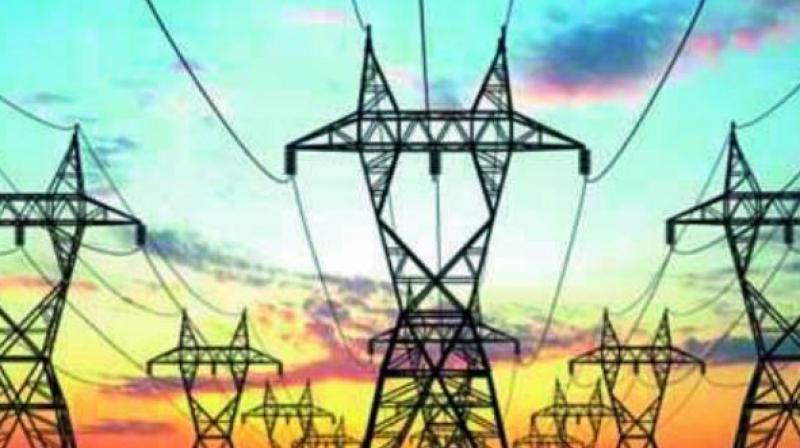Telangana: Payment shocker for power cables
Farmers use of land under power cables restricted but they get paltry compensation.

Hyderabad: Farmers are crying foul over a compensation order of the Ranga Reddy collector, based on which TSTransco has been paying a paltry sum of Rs 60 per square metre to those on whose farm land power lines have been laid.
The registration department’s market rate in areas like Chevella is about Rs 1,000 per sq. yd.
The issue was brought up by Consortium of Indian Farmers’ Associa-tion leader P. Chengal Reddy before the Electri-city Regulatory Commis-sion on Wednesday.
In 2014, during a hearing regarding compensation for farmers in Yacharam, Kandukur, Shabad, Che-vella and Shankarapally, for laying the Nandiwana-parthy and Shankarapally 400 KV line, the collector had given certain orders that Transco approved.
Mr Chengal Reddy said, “As per that order, Trans-co has to pay Rs 2.45 lakh to Rs 4.5 lakh per tower of 400 KV to farmers. The issue is with the land that comes under the power lines, for which only Rs 60 per square metre is paid. This is a gross injustice to the farmers.”
Explaining the reasoning behind paying for the land under power lines, the TS Transco memo of 2014 reads: “The farmers’ lands even underneath the transmission line conductor between tower and tower are affected where the farmer can’t further construct any structures and even can’t grow tall trees. Hence Rs 60 per squ-are metre has been fixed.”
On April 10, 2015, TSTransco CMD D. Prabhakar Rao in a communication to Ranga Reddy collector M. Raghu-nandan Rao, said: “The 220 KV Shankarpally to Parigi line is passing parallel to the 400 KV line. The farmers are demanding crop compensation amount on par with the 400 KV line, while the area of damage for 400 KV tower is 350 square yards whereas for 220 KV tower it is only 60 square yards.”
He added that as the 220 KV line towers have to be set up at 137 locations, the compensation would be huge. He asked the collector to revise the amount.
Explaining the rationale, Mr Raghunandan Rao told this newspaper: “The Indian Telegraph Act applies here. As per the Act, there is no compensation, only crop damage is to be paid for. The perceived loss of land value depends on its situation and geographical location. In land acquisition, there is transfer of ownership. Here, there is no transfer of ownership. It is only denial or restrictions on the right of the farmer to use the land.”
He said that the challenge was bigger in semi-urban areas where the land was to be converted from agriculture to residential or other purposes.
Mr Prabhakar Rao justified the order saying, “We are using the land only for setting up towers and lines which serve a public purpose. The same is the case throughout the country. If we pay compensation for all the lines and towers, it will be difficult to supply power.”
